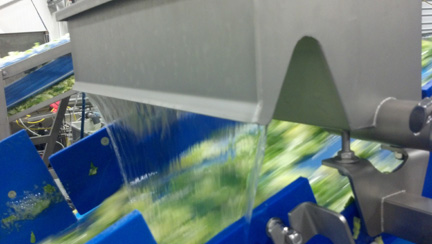News and Stories
Understanding Wash-Water Systems

What is the purpose of an antimicrobial in a wash-water system? Many think it is to sanitize the surface of the product that is being washed and eliminate the chance of having a foodborne outbreak. This assumption is false and an industry misconception. At this time, there is no “kill step” that completely eliminates a human pathogen from fresh produce.
An antimicrobial in a wash-water system is used to prevent any cross-contamination while the product is being washed, rinsed, cooled, and/or rehydrated. It’s important to understand that a system that utilizes an antimicrobial, but is running out of normal operating parameters, can be as ineffective as having no antimicrobial present and can become a vector of cross-contamination.
The dependability of one’s wash-water system relies on the effectiveness of the oxidizer (antimicrobial). The more organic matter the water contains—fruit and vegetable juices and soil—the less effective the oxidizer is at eliminating viable free-floating microorganisms and allowing them to attach to uncontaminated produce. The most common antimicrobials used today are calcium or sodium hypochlorite, chlorine dioxide, peroxyacetic acid, and ozone. All are great antimicrobials and are very effective when used appropriately.
Markon requires that water that comes in contact with produce post-harvest needs to have an antimicrobial and a documented wash-water program. The issues we and the industry struggle with are how do we validate our wash-water systems and confirm the efficacy of the antimicrobial? In an effort to address these issues, the Center for Produce Safety hosted its third annual Produce Research Symposium at the University of California, Davis campus on June 27, 2012. Markon’s President, Tim York took part in a panel discussion on wash-water process control and validation strategies. Stay tuned for more information from the event in a future post.
